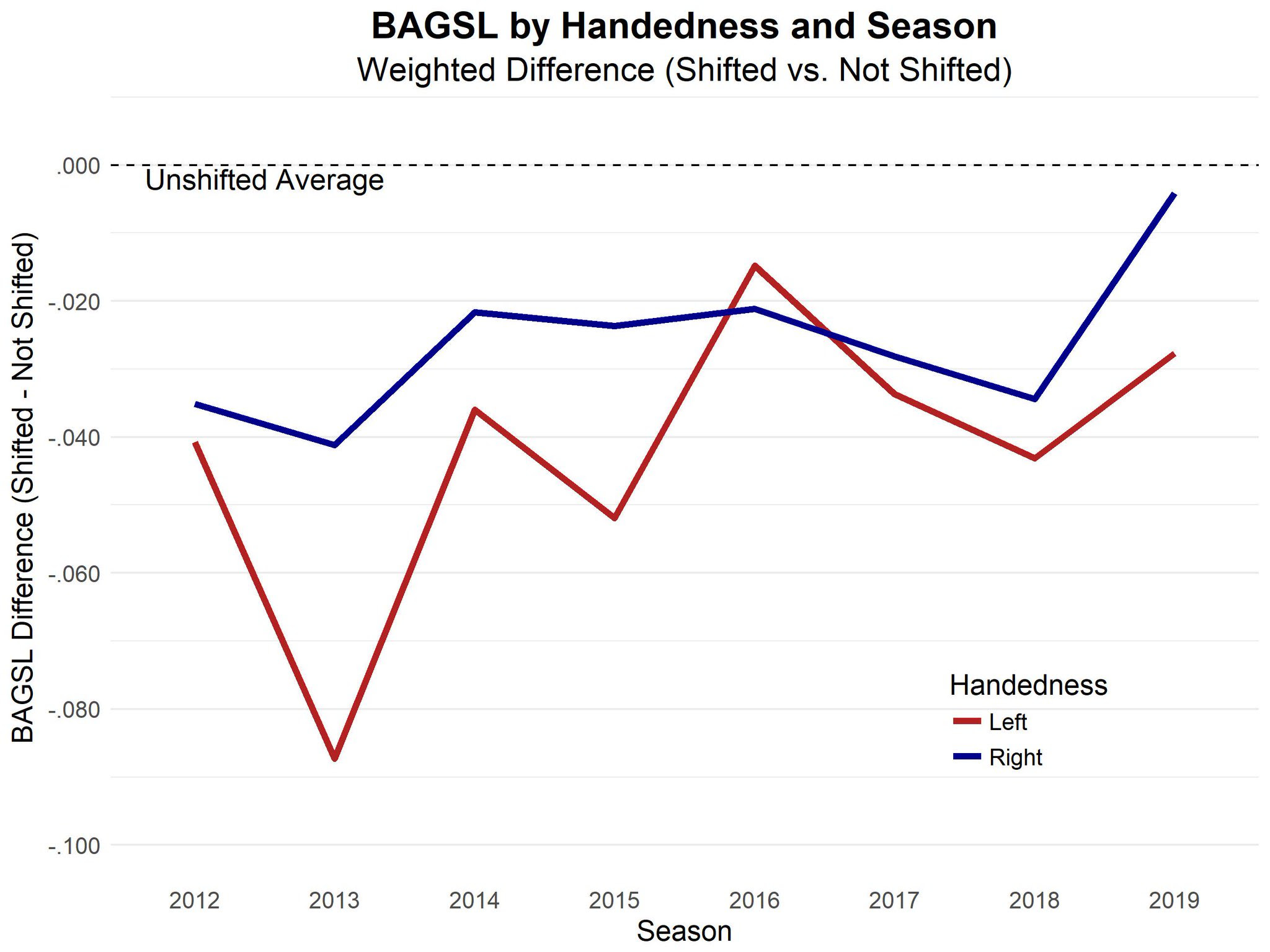In recent weeks, we’ve heard a couple of broadcasts mention that hitters are doing a better job against the shift. As well they should, because as the shift becomes more and more common—this year's prorated full-season total is nearly 10,000 more shifts on balls in play than last season, which was a record 34,000—hitters better be able to make hay against a shifted defense.
A simple way to assess this is to compare the batting average on grounders and short line drives (BAGSL) against shifts to the numbers against standard alignments. This is only going to include full shifts, because Sports Info Solutions has concluded on multiple occasions that partial shifts aren’t as effective.
Batting Average on Grounders and Short Line Drives, 2015-2019
| |
Right-Handed Batters |
Left-Handed Batters |
| Season |
Full Shift |
No Shift |
Diff |
Full Shift |
No Shift |
Diff |
| 2015 |
.248 |
.267 |
-.019 |
.197 |
.258 |
-.061 |
| 2016 |
.255 |
.270 |
-.015 |
.219 |
.257 |
-.038 |
| 2017 |
.244 |
.271 |
-.026 |
.215 |
.267 |
-.053 |
| 2018 |
.242 |
.270 |
-.027 |
.213 |
.264 |
-.050 |
| 2019 |
.257 |
.270 |
-.013 |
.222 |
.263 |
-.041 |
Taking a look at the numbers, it does appear that the shift is losing its bite. Compared to the last two seasons, the shift has been less effective in suppressing hits on groundballs and short line drives (GSLs) in 2019. That said, the numbers before 2017 look similar enough to 2019 that this year's downturn isn't unprecedented.
This isn’t the best way to represent the effect of the shift, though. The shift gets used more often against hitters who will be affected by it most, and those tend to be above-average hitters (the classic examples are players like David Ortiz, Brian McCann, and Ryan Howard). That might bias the sample.
Let’s balance things out by taking each player’s BAGSL difference and weighing it according to the lower of their GSLs against the shift and their GSLs against a traditional alignment. Players who are shifted almost all the time or almost none of the time will have limited impact, and players who have a substantial sample in both situations have a larger contribution.

After making that correction, the effect of the shift against left-handed batters is small compared to the last couple years, but still in line with pre-2016 values. For right-handed batters, though, there has been quite a change, and the benefit to shifting is almost non-existent in 2019.
Contributing to the ineffectiveness against right-handers is that teams like the Twins and Brewers—who have shifted righties the most this year—are getting burned, allowing batting averages over .350 on GSLs when using a full shift against a right-handed batter. It’s not necessarily indicative of a larger trend in shift effectiveness yet, as contending teams are likely to cut back if they continue to struggle with aggressive shifting. But it is certainly a phenomenon to monitor as the season progresses.
Sports Info Solutions has started a baseball podcast. The show will feature MLB-related guests and feature talk about analytics-related subjects. The current episode includes an interview with Yankees broadcaster, David Cone. You can find the link to the podcast here .